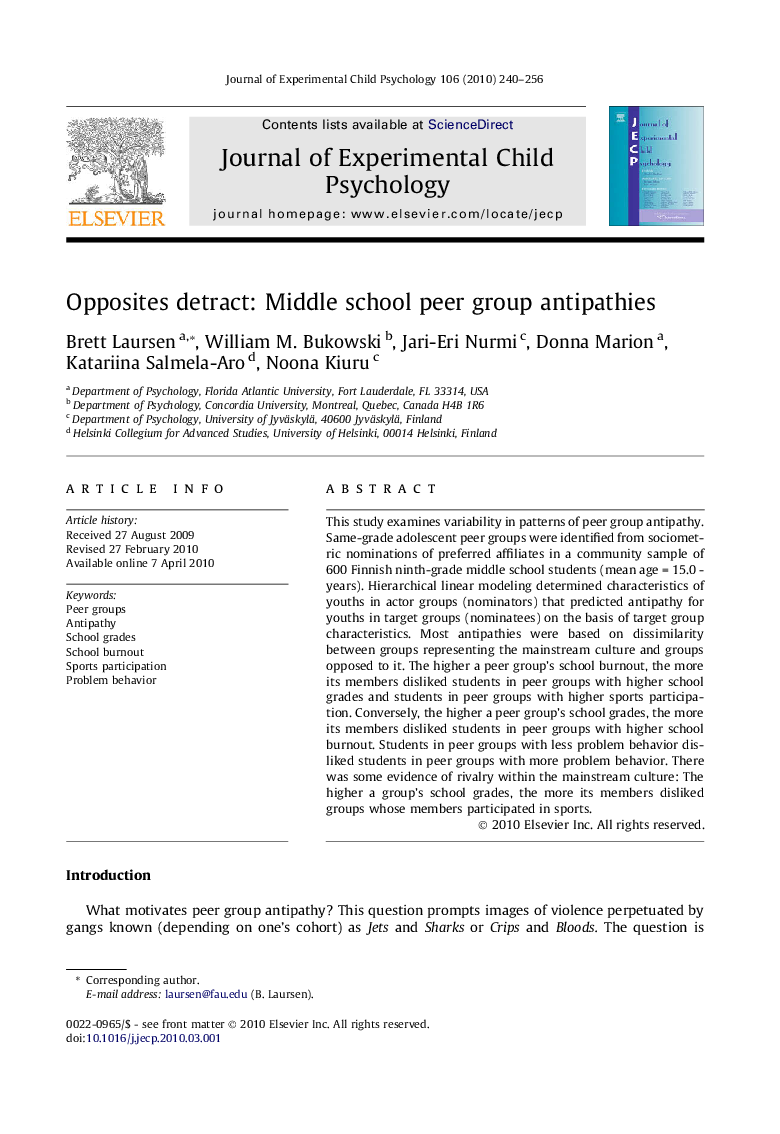| Article ID | Journal | Published Year | Pages | File Type |
|---|---|---|---|---|
| 918433 | Journal of Experimental Child Psychology | 2010 | 17 Pages |
This study examines variability in patterns of peer group antipathy. Same-grade adolescent peer groups were identified from sociometric nominations of preferred affiliates in a community sample of 600 Finnish ninth-grade middle school students (mean age = 15.0 years). Hierarchical linear modeling determined characteristics of youths in actor groups (nominators) that predicted antipathy for youths in target groups (nominatees) on the basis of target group characteristics. Most antipathies were based on dissimilarity between groups representing the mainstream culture and groups opposed to it. The higher a peer group’s school burnout, the more its members disliked students in peer groups with higher school grades and students in peer groups with higher sports participation. Conversely, the higher a peer group’s school grades, the more its members disliked students in peer groups with higher school burnout. Students in peer groups with less problem behavior disliked students in peer groups with more problem behavior. There was some evidence of rivalry within the mainstream culture: The higher a group’s school grades, the more its members disliked groups whose members participated in sports.
